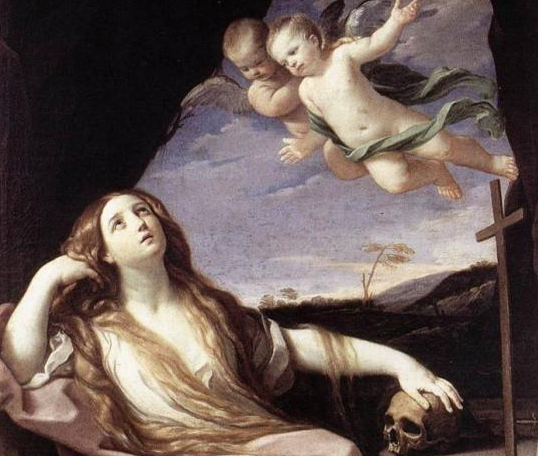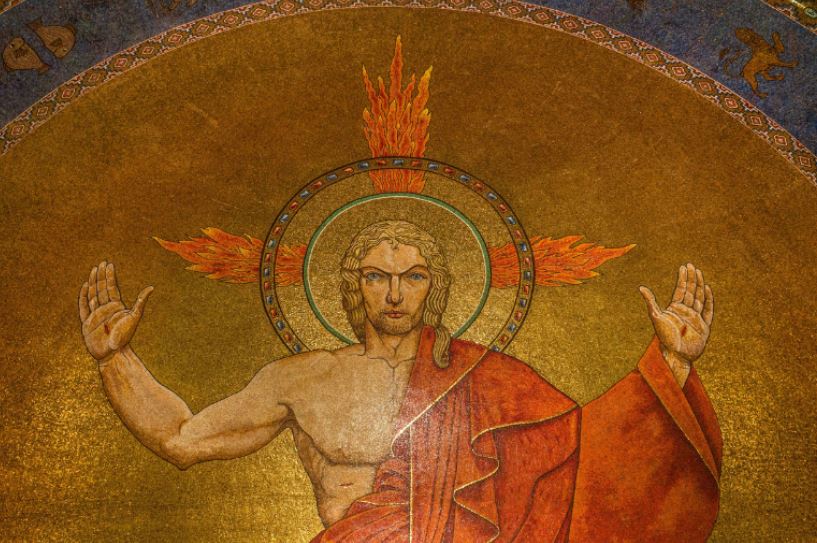Victory! Judge Brings End to California Law Requiring Pro-Life Centers to Promote Abortion
October 29, 2018BEAUTIFUL! Together Facing God: Watch Video of Father Illo Talk About Why Mass is Celebrated Ad Orientem
October 29, 2018
By Elizabeth Lev, Catholic Herald, 25 Oct 2018
Amid the apocalyptic landscape of the Reformation, the Church needed saints and theologians – but also painters and sculptors
Once upon a time the Church was wracked by tempests of doubt and division. There was widespread confusion among the faithful regarding the significance of the sacraments and, as a result, the clear path to salvation was obscured.
The Eucharist and penance seemed to have lost their celestial and binding power, becoming more motions than mysteries, and humanity’s cooperation in its own salvation appeared to diminish as exhortations to “Be a sinner and sin boldly” began to undermine people’s concern for adhering to ancient moral teachings.
All the while, the faithful were pelted by a hailstorm brought on by new technology. The printing press deluged people with information, misinformation and opinions, often driven by a polemical, incendiary tone that served more to drive the members of the battered Ecclesia apart rather than gather them together.
This tale, for all its odd familiarity, took place 500 years ago in the wake of the Protestant Reformation, unleashed by Martin Luther in 1517. The Church faced an apocalyptic spiritual landscape in those dark years, as brother turned on brother, Rome, the capital of Christendom, was sacked, and the papacy seemed to fiddle for personal interests as the city burned (Clement VII wanted a dukedom for his nephew, and no one quite knows what Julius III was doing …).
It was, however, in this dark and ugly time that the Church produced some of its most lasting beauty – the lives of the exceptional saints that rose up in this era as well as the clear affirmation of doctrine by the difficult, drawn-out Council of Trent. Today, however, we often overlook and underappreciate the third great ally to the teaching of the true faith: the beauty of Catholic art.
At first, art appeared to be more a part of the problem than the solution. The golden age of Michelangelo and Raphael had waned and art had descended into a self-serving, self-absorbed medium, intent on absurdly distorted compositions (think a dozen porcelain-skinned nude contortionists), indecipherable iconography (except by the handful “in the know”), and, on occasion, even base titillation (wait, didn’t chaste Susanna reject the old men?).
Instead of despairing of this ancient means of communication, the Church laid down guidelines and recruited art to participate in the front lines of re-evangelisation. Cardinal Gabriele Paleotti spearheaded the effort with his 1582 treatise The Discourse on Images, meant to help artists understand the difference between profane art – concerned with things of this world – and sacred art, pointing towards the eternal. Inviting artists to become “silent preachers” alongside theologians, Paleotti prescribed clarity, intelligibility and stimulus towards piety as the formula for powerful art. Faced with many choices in the aftermath of the Reformation, the faithful looked for direction and beauty became a means of persuasion.
Artists waded into the principal controversies of the day, reaffirming the reality of the sacraments, highlighting the need for intercession, and encouraging human cooperation in the divine work of salvation.
All the sacraments had come under sceptical scrutiny after Luther, but the reformers took particular aim at the Sacrament of Penance. Art joined the team led by St Philip Neri (whose legendary penances included requiring that a vain young man wear a fox’s tail around town), and St Charles Borromeo (who designed new confessionals), with the task of making penance look attractive.
Artists fused their drive to produce visually appealing works with the need to communicate Catholic truth and came up with myriad solutions. Titian’s The Good Thief with Christ and Annibale Carracci’s The Mocking of Christ displayed the loving intimacy with which Jesus recognises and forgives sins.
But nothing was as effective with the laity as the new repertoire of images of Mary Magdalene. A staple of altarpieces since the 6th century, she had been depicted as weeping under the Cross, announcing the Resurrection to the Apostles and carrying a jar of precious ointment in her most splendid finery. Counter-Reformation artists gave Mary Magdalene a new look: the penitent. They placed her in nature, amid rocky landscapes, evoking the apocryphal story of her life of fasting and contemplation after the Ascension. But instead of depicting an emaciated, weathered figure, they portrayed Mary Magdalene as a voluptuous woman draped in cascades of golden hair. Self-denial never looked so good.
Scores of artists immortalised the Magdalene in this period, from Caravaggio to Artemisia Gentileschi, but the most popular producer of this new model of penitence was Guido Reni, a Bolognese painter and one of the most elegant agents of Catholic Restoration art.
Reni’s version of the Penitent Magdalene, painted for private devotion in 1633, perfected the image. The saint wedged in a crevice of dark stone gazes upwards to bask in a celestial vision guided by two putti.
The lower half of her body seems entombed in the rocks, the roots and simple cross symbolic of her life of self-mortification. Her body, modelled after the most voluptuous of ancient statues, is draped in heavy robes painted in Reni’s signature shade, mauve.
Mary Magdelene, in the history of art, is almost invariably distinguished by her red robes, representing her passionate character. She throws herself at the feet of Christ, she weeps wildly under the Cross, she is seen as the woman who “loved much” (Luke 7:47).
Reni tempers the red with blue to show a subduing of her passionate physical nature in favour of her ecstatic spiritual nature. The viewer’s gaze follows the soft lines of her drapery to the torrent of luminous hair. Her chemise, open to reveal the flesh above her heart, is bathed in a heavenly light. Having bared her soul to the Lord and left behind the desires of the world, her face contemplates the true beauty of Christ’s love and forgiveness.
Artists, however, did not limit their work to extolling the virtues of the sacraments. They also took on the challenge of translating the Catholic message into the modern age. It was the age of Cartesian doubt, and with a plethora of belief options, the faithful were often unsure where to place their trust. As a result, artists created works that showed compassion to their plight, yet also provided direction. Images of St Thomas doubting Christ’s Resurrection graced altars as well as private homes, the most memorable being Caravaggio’s striking version painted for the Roman nobleman Vincenzo Giustiani in 1602.
But leadership was needed to lead the flock out of what Dante had described as a “dark wood”, so St Peter’s Basilica, completed in the wake of the Reformation, confronted doubt at the very threshold of the church. Both pilgrims and priests were greeted by the Gospel scene in which Peter, seeing Christ walking upon the waters of the stormy sea of Galilee, asks to join Him. But as he walks upon the waves his doubt makes him sink. Christ catches Peter saying: “Oh man of little faith, why did you doubt?” (Matthew 14:28–31).
Cardinal Cesare Baronio, in charge of the decoration of the basilica, commissioned a striking version in 1604 from the painter Bernardo Castello. Churning waves crash and agitated Apostles try to react as Peter sinks, throwing his hands up in desperate terror. Jesus calmly clasps his wrist and points towards serene skies above. Baronio chose to place this work by the basilica’s clergy entrance to encourage them to leave doubt outside those doors. If the shepherds are not sure-footed, what will happen to the sheep?
The age of the Catholic Restoration, picking up the pieces after division, betrayal, rebellion and violence, found that art and beauty were effective means of communicating Truth and Goodness. It engaged a bewildered public with clarity, offering images that were pleasing to see and easy to understand.
These works were so successful that they still draw millions of people to Rome every year, Christian or not, even though much of their message is obscured. It seems, however, that Catholic Restoration can still offer a few lessons today on how beauty can effectively convey clear teaching, affirmation of faith and peaceful persuasion.
Elizabeth Lev is an art historian living in Rome. Her latest book, How Catholic Art Saved the Faith: The Triumph of Beauty and Truth in Counter-Reformation Art, is available on Amazon and from Sophia Institute Press
This article first appeared in the October 26 2018 issue of the Catholic Herald. To read the magazine in full, from anywhere in the world, go here







